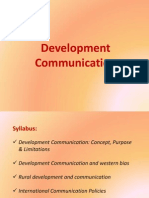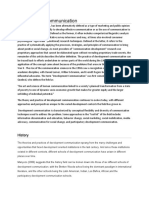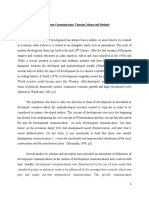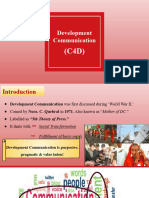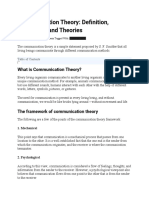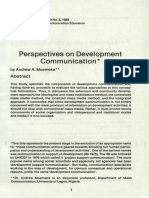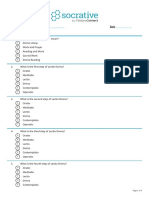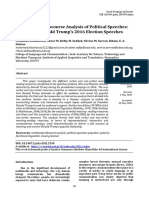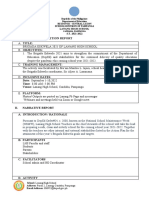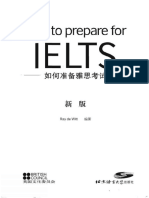0% found this document useful (0 votes)
67 views4 pagesDevelopment Communication Theory
Development communication theory emphasizes the use of media to foster genuine responses and critical consciousness among people for social change, without manipulation or propaganda. Initially linked to Westernization, the theory has evolved to focus on participatory communication and local development, aiming to improve the quality of life across various dimensions. While it has strengths in facilitating international development projects, it also faces criticism for perpetuating cultural hegemony.
Uploaded by
sarpanch2929Copyright
© © All Rights Reserved
We take content rights seriously. If you suspect this is your content, claim it here.
Available Formats
Download as DOCX, PDF, TXT or read online on Scribd
0% found this document useful (0 votes)
67 views4 pagesDevelopment Communication Theory
Development communication theory emphasizes the use of media to foster genuine responses and critical consciousness among people for social change, without manipulation or propaganda. Initially linked to Westernization, the theory has evolved to focus on participatory communication and local development, aiming to improve the quality of life across various dimensions. While it has strengths in facilitating international development projects, it also faces criticism for perpetuating cultural hegemony.
Uploaded by
sarpanch2929Copyright
© © All Rights Reserved
We take content rights seriously. If you suspect this is your content, claim it here.
Available Formats
Download as DOCX, PDF, TXT or read online on Scribd
/ 4








